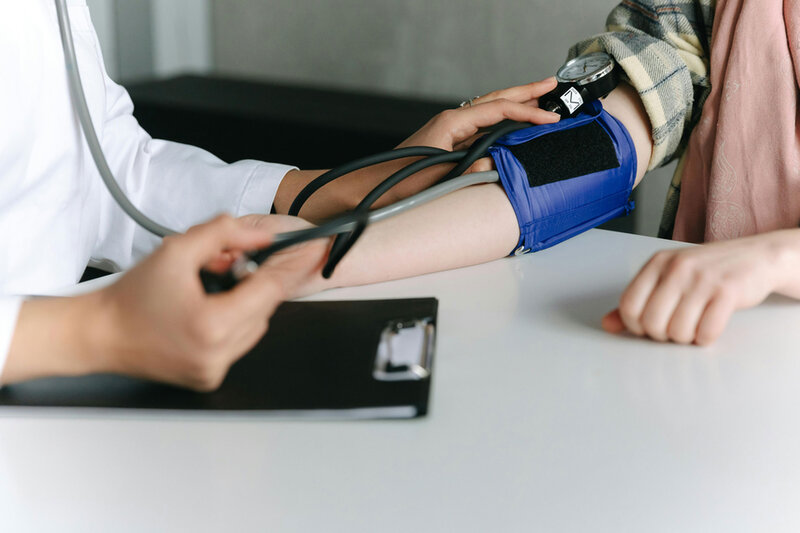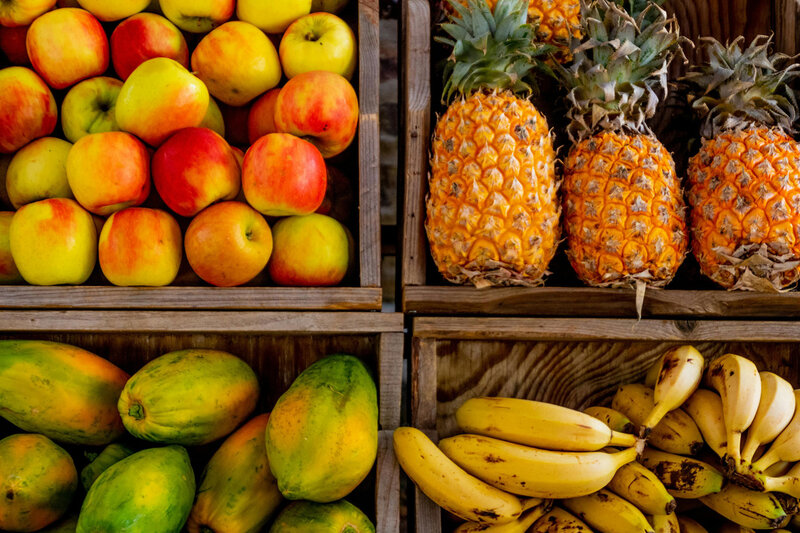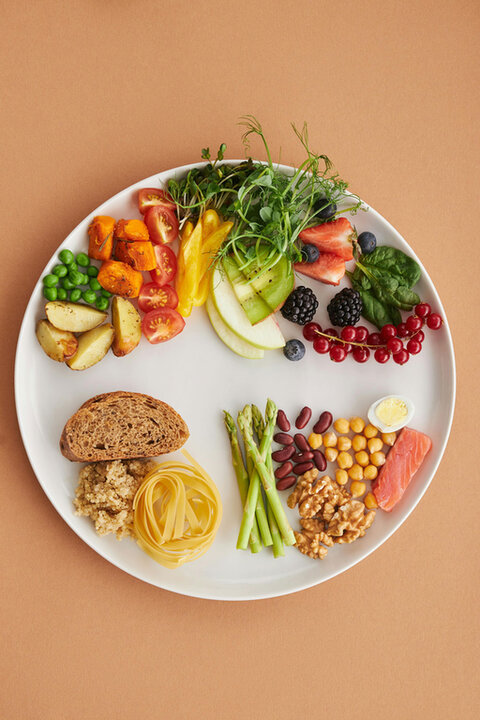KEYWORDS
Health
Wellness
Hypertension
Diet
Nutraceutical
Chronic disease
Abstract
Hypertension is a major risk factor for cardiovascular disease and the development of other chronic health conditions. As a result, lifestyle modifications, such as maintaining a proper diet and employing nutraceuticals, play a critical role in their prevention and management. The Dietary Approach to Stop Hypertension (DASH) diet, which is rich in fruits, vegetables, whole grains and low-fat dairy, has shown significant benefits in reducing high blood pressure. Additionally, nutraceuticals, such as vitamin C, omega-3 fatty acids and vitamin D have demonstrated positive effects on vascular health and blood pressure regulation. The aim of this paper is to explore how natural approaches, like the DASH diet and nutraceuticals, contribute to the prevention and management of hypertension.
Introduction
Are you “healthy”? The World Health Organization (WHO) defines health as a state of complete physical, mental and social well-being and not merely the absence of disease or infirmity (1). Maintaining our health includes benefits such as weight management (2), improved cognitive function, lower anxiety levels, decreased symptoms of depression and decreased risk for chronic disease (3). We can maintain our health in many ways, including maintaining a proper diet and exercise (4). However, many factors have a negative impact on our health – poor eating habits and decreased activity levels put us at increased risk for developing a chronic disease (5).
Chronic diseases are conditions that last one or more years and require ongoing medical management, limit activities of daily living, or both (6). Examples include diabetes, heart disease, stroke, cancer(7) and hypertension (8).Many of these diseases can be linked to behaviors such as smoking, poor nutrition, inactivity and excessive alcohol use. In the United States, six in ten people have at least one chronic disease, and four in ten have two or more (9). Thirty-five percent of people living in the European Union reported having a chronic disease in 2023 (10).
One such condition, hypertension, has been identified as the leading risk factor contributing to premature cardiovascular disease – the world's leading cause of premature morbidity and mortality (8).Hypertension iswhen a person’s blood flows at persistently higher than normal pressures. Generally speaking, blood pressure should be around 120/80mm Hg, and blood pressure is considered “high” when the top number (systolic) is 130 mm Hg or higher, or the bottom number (diastolic) is 80 mm Hg or higher. If left untreated, this can lead to serious conditions such as aneurysm, stroke, kidney disease, heart attack, and atherosclerosis (11).
While hypertension is not thought to be curable(8), thankfully we have numerous lifestyle options for treatment, including, healthy eating(11) and nutraceuticals (12). An increasing number of people are turning towards more natural approaches to preventing and treating chronic conditions due to their proven effectiveness, and the potential side effects of pharmaceutical interventions (13). Diets low in saturated fats and sodium and rich in fruits, vegetables, and fiber have been shown to be an effective means of managing and treating hypertension (14). Recently, the Dietary Approaches to Stop Hypertension (DASH) diet has emerged as a prominent dietary strategy for managing hypertension (15). Nutraceuticals have drawn considerable attention due to their potential safety as well as nutritional and therapeutic effects (16). Additionally, they have been proven effective in lowering blood pressure (12). Therefore, the aim of this paper is to explore how natural approaches, like the DASH diet and nutraceuticals, contribute to the prevention and management of hypertension.

The DASH Diet
The Dietary Approaches to Stop Hypertension, or DASH diet, was initially explored in 1997 and investigated the effects of dietary patterns on blood pressure (17). It consists of foods that are rich in potassium, magnesium, calcium, protein and fiber, and low in saturated fat, cholesterol and total fat.
The DASH diet focuses on a strategy that encourages consuming fruits, vegetables, and fat-free or low-fat dairy products. The eating plan also suggests the intake of whole grains, fish, poultry and nuts, while calling for a reduction in lean red meats, sweets, added sugars and sugar-containing beverages (18).
Multiple studies (17, 19) have been conducted showing a positive effect on blood pressure when using the DASH diet. The initial DASH diet study by Appel et al. examined 459 subjects with a systolic blood pressure of less than 160 mm Hg and a diastolic blood pressure of 80 to 95 mm Hg. For three weeks, all subjects consumed a control diet (low in fruits, vegetables, and dairy products, with a fat content typical of the average diet in the United States). Subjects were then divided into 3 groups – a control group, a fruit and vegetable diet (more fruits and vegetables and fewer snacks and sweets than the control diet) and a combination diet (rich in fruits, vegetables, and low-fat dairy foods and had reduced amounts of saturated fat, total fat, and cholesterol with high fiber and protein quantities). The study found that the combination diet lowered systolic blood pressure by 5.5 mm Hg and diastolic blood pressure by 3.0 mm Hg more than a control diet. Additionally, they discovered that the reduction in blood pressure was visible at two weeks and maintained for the following six weeks (17).
A second study trialed a reduced sodium diet combined with the DASH diet to investigate the effect of sodium on blood pressure. Four hundred and twelve participants were randomly assigned to three groups: a control group on a typical American diet (140 mmol of sodium/day), a group on the DASH diet with higher sodium intake (100 mmol of sodium/day), and a group on the DASH diet with lower sodium intake (65 mmol of sodium/day). While the higher sodium intake DASH diet decreased systolic blood pressure, the reduction in blood pressure was even greater when combined with a low sodium intake and reduced systolic blood pressure by 7.1 mmHg in those without hypertension and 11.5 mmHg in those with hypertension on average (19).

The DASH Diet Plan
So, what exactly does a DASH diet plan look like? A typical serving guide for a person following the DASH plan would be:
- Vegetables – about 5 servings per day
- Fruits – about 5 servings per day
- Carbohydrates – about 7 servings per day
- Low-fat dairy products – about 2 servings per day
- Lean meats – about 2 or fewer servings per day
- Nuts and seeds – 2-3 times per week
The DASH plan also provides suggestions for meeting a person’s macronutrient and mineral needs (20).
Carbohydrates: consider green leafy vegetables, such as kale, broccoli, collards and mustards, low glycemic index fruits, legumes and beans, and whole grains, such as cracked wheat, millet and oats.
Fats: focus on fats that prevent inflammation, provide essential fatty acids and promote overall health, such as olive oil, avocado, nuts, hemp seeds, flaxseeds and fish rich in omega-3 fatty acids.
Protein: one should aim to consume more sources of plant protein, such as legumes, nuts, seeds and soy products. Animal proteins should come from lean meats, low-fat dairy products, eggs and fish. Processed and cured meats should be avoided, as they have been shown to cause hypertension and may contain carcinogens.
Minerals: foods rich in potassium, calcium and magnesium have been shown to prevent endothelial dysfunction and promote endothelial smooth muscle relaxation – put in other terms, they help preserve the lining of blood vessels and allow blood vessels to expand, reducing blood pressure (20, 21).
The benefits of the DASH diet have been found to extend beyond only those concerned with hypertension. Studies have shown that the DASH diet helps lower blood glucose levels, triglycerides, low-density lipoproteins (“bad” cholesterol), and insulin resistance. Furthermore, the DASH diet has shown a decrease in the occurrence of colorectal cancers and is beneficial to some extent in cases of chronic liver disease, diverticular disease and celiac disease, making it useful to a wide range of the population (20).

Nutraceuticals
In addition to dietary approaches, nutraceuticals can play a complementary role in regulating hypertension. These bioactive compounds have received much interest as of late due to their potential safety, nutritional and therapeutic effects (16), and when used in conjunction with a proper diet, they offer natural methods for blood pressure management. The term nutraceutical was first coined by Stephen DeFelice, MD, in 1989 and refers to “a food (or part of a food) that provides medical or health benefits, including the prevention and/or treatment of a disease” (22). They are thought to improve health, delay aging, prevent chronic diseases, increase life expectancy and support the structure and function of the body. Furthermore, research indicates that they have an impact on diseases such as allergies, Alzheimer’s, cardiovascular disease, cancer, diabetes and Parkinson’s Disease (16).
Within the context of hypertension, nutraceuticals have been shown to produce a physiological effect on the body that mimics hypertensive medications, improves vascular health and decreases blood pressure through natural means (23, 24). Nutraceuticals, either alone or in combination with other interventions, may reduce the need for more pharmacological therapies and reduce the risk of side effects (24).
Various nutraceuticals have been shown to decrease blood pressure, some of which are vitamin C, omega-3 fatty acids, and vitamin D.
Vitamin C
The sources and effects of Vitamin C (ascorbic acid) on the human body have been well documented. Vitamin C can be found in a variety of food sources, such as fruits and vegetables, as well as animal organs (liver, kidney and brain) (25). Interestingly, vitamin C, when used as a nutraceutical, has a major impact on blood pressure. Research has shown that 250 mg taken twice a day reduces systolic blood pressure by 7 mmHg, and diastolic by 4 mmHg, on average. A second study in elderly patients with hypertension, who were already taking the maximum pharmacologic therapy, showed that 600 mg of vitamin C daily lowered BP by an additional 20/16 mmHg (26). Vitamin C is thought to have this effect because it improves the health of blood vessels and produces a diuretic effect, which helps the body to eliminate excess fluids through the urine, and contribute to lowering blood pressure (24).
Omega-3 Fatty Acids
Omega-3 fatty acids are found in many foods, such as cold-water fish, fish oils, flax, flax seed, flax oil, and nuts. A review of 70 randomized control trials found that supplementation with 0.3-15 g/day for 4-26 weeks reduced systolic blood pressure by 1.5 mmHg and diastolic by 1.0 mmHg. It is thought that omega-3 fatty acids reduce blood pressure by increasing the availability of endothelium‐derived relaxing factor (NO) through upregulation and activation of endothelial NO synthase (27). In simpler terms, omega-3 fatty acids help to promote vascular relaxation and dilation, thereby decreasing blood pressure (28).
Vitamin D
Few foods naturally contain vitamin D, and fatty fish, such as trout, salmon, tuna, and mackerel and fish liver oils are among the best natural sources. Many foods are fortified with Vitamin D, including breakfast cereals, and some brands of orange juice, yogurt, and margarine, among others (29). It has been established that lower levels of vitamin D increase the risk of hypertension, thereby underscoring the need to take in appropriate amounts (24). A meta-analysis of 30 clinical trials, involving a total of 4,744 participants, were administered between 5 mcg and 300 mcg per day of vitamin D3 for an average of 5.3 months. They found that taking more than 20 mcg per day significantly reduced systolic and diastolic blood pressures in normal-weight subjects with hypertension (30). It is believed that vitamin D functions to reduce blood pressure by increasing nitric oxide (a vasodilator), improving blood vessel health, and regulating electrolytes and blood volume (24).
Conclusion
Hypertension remains a major global health concern, contributing to the development of cardiovascular disease and other chronic conditions. While pharmacological treatments are in some case necessary, natural approaches, such as the DASH diet and nutraceuticals may offer safe and effective means for managing and preventing hypertension. The DASH diet, with its emphasis on whole, healthy foods,, has consistently showed a positive effect on lowering blood pressure. Additionally, nutraceuticals, like vitamin C, omega-3 fatty acids and vitamin D, and also demonstrated beneficial effects on blood pressure regulation, along or in conjunction with other remedies. Together these natural interventions offer a promising pathway for individuals seeking to manage hypertension, reduce reliance on medications, and enhance long-term health outcomes.
References and notes
- World Health Organization. Constitution of the World Health Organization [Internet]. World Health Organization; [cited 2025 Feb 19]. Available from: https://www.who.int/about/governance/constitution
- Rippe JM. Lifestyle medicine. CRC Press; 2019. https://www.taylorfrancis.com/books/edit/10.1201/9781003227793/lifestyle-medicine-fourth-edition-james-rippe
- Rippe JM. Lifestyle Medicine: The Health Promoting Power of Daily Habits and Practices. American Journal of Lifestyle Medicine [Internet]. 2018;12(6):499–512. Available from: https://www.ncbi.nlm.nih.gov/pmc/articles/PMC6367881/
- National Institute of Diabetes and Digestive and Kidney Diseases. Health tips for adults [Internet]. NIDDK - National Institute of Diabetes and Digestive and Kidney Diseases; 2025 [cited 2025 Feb 20]. Available from: https://www.niddk.nih.gov/health-information/weight-management/healthy-eating-physical-activity-for-life/health-tips-for-adults#activity
- Centers for Disease Control and Prevention. About chronic diseases [Internet]. Centers for Disease Control and Prevention; 2024. Available from: https://www.cdc.gov/chronic-disease/about/index.html
- Centers for Disease Control and Prevention. About chronic diseases [Internet]. Centers for Disease Control and Prevention; [cited 2025 Feb 19]. Available from: https://www.cdc.gov/chronic-disease/about/index.html
- Hacker K. The burden of chronic disease. Mayo Clin Proc Innov Qual Outcomes. 2024;8(1):112–119. doi: 10.1016/j.mayocpiqo.2023.08.005 https://pmc.ncbi.nlm.nih.gov/articles/PMC10830426/
- Lewanczuk R. Hypertension as a chronic disease: What can be done at a regional level? Can J Cardiol. 2008;24(6):483–484. doi: 10.1016/s0828-282x(08)70622-6 https://pmc.ncbi.nlm.nih.gov/articles/PMC2643192/
- Centers for Disease Control and Prevention. About chronic diseases [Internet]. Centers for Disease Control and Prevention; [cited 2025 Feb 19]. Available from: https://www.cdc.gov/chronic-disease/about/index.html
- Statistics explained. Self-perceived health statistics - Statistics Explained [Internet]. Eurostat; [cited 2025 Feb 19]. Available from: https://ec.europa.eu/eurostat/statistics-explained/index.php?title=Self-perceived_health_statistics
- U.S. Department of Health and Human Services. What is high blood pressure? [Internet]. National Heart Lung and Blood Institute; [cited 2025 Feb 19]. Available from: https://www.nhlbi.nih.gov/health/high-blood-pressure
- Borghi C, Cicero AF. Nutraceuticals with a clinically detectable blood pressure‐lowering effect: A review of available randomized clinical trials and their meta‐analyses. Br J Clin Pharmacol. 2016;83(1):163–171. doi: 10.1111/bcp.12902 https://pmc.ncbi.nlm.nih.gov/articles/PMC5338151/
- Chrysant SG, Chrysant GS. Herbs used for the treatment of hypertension and their mechanism of action. Curr Hypertens Rep. 2017;19(9). doi: 10.1007/s11906-017-0787-x https://pubmed.ncbi.nlm.nih.gov/28921053/
- Kokkinos P, Panagiotakos DB, Polychronopoulos E. Dietary influences on blood pressure: The effect of the Mediterranean diet on the prevalence of hypertension. J Clin Hypertens (Greenwich). 2005;7(3):165–170. doi: 10.1111/j.1524-6175.2005.05138.x https://pmc.ncbi.nlm.nih.gov/articles/PMC8109559/
- Onwuzo C, Olukorode JO, Omokore OA, et al. Dash diet: A review of its scientifically proven hypertension reduction and health benefits. Cureus. 2023;15(1):e44692. doi: 10.7759/cureus.44692 https://pmc.ncbi.nlm.nih.gov/articles/PMC10551663/
- Nasri H, Baradaran A, Shirzad H, Rafieian-Kopaei M. New concepts in nutraceuticals as alternative for pharmaceuticals. Int J Prev Med. 2014;5(12):1487–1499. https://pmc.ncbi.nlm.nih.gov/articles/PMC4336979/
- Appel LJ, Moore TJ, Obarzanek E, et al. A clinical trial of the effects of dietary patterns on blood pressure. N Engl J Med. 1997;336(16):1117–1124. doi: 10.1056/NEJM199704173361601 https://pubmed.ncbi.nlm.nih.gov/9099655/
- National Institutes of Health. Lowering your blood pressure with DASH [Internet]. National Heart, Lung, and Blood Institute; 2006. Available from: https://www.nhlbi.nih.gov/files/docs/public/heart/new_dash.pdf
- Sacks FM, Svetkey LP, Vollmer WM, et al. Effects on blood pressure of reduced dietary sodium and the Dietary Approaches to Stop Hypertension (DASH) diet. The DASH-Sodium Collaborative Research Group. N Engl J Med. 2001;344(1):3–10. doi: 10.1056/NEJM200101043440101 https://www.nejm.org/doi/10.1056/NEJM200101043440101?url_ver=Z39.88-2003&rfr_id=ori:rid:crossref.org&rfr_dat=cr_pub%20%200www.ncbi.nlm.nih.gov
- Challa HJ, Uppaluri KR. DASH diet (dietary approaches to stop hypertension) [Internet]. StatPearls Publishing; 2023. Available from: https://www.ncbi.nlm.nih.gov/books/NBK482514/
- Houston MC, Harper KJ. Potassium, magnesium, and calcium: Their role in both the cause and treatment of hypertension. J Clin Hypertens. 2008;10(7):3–11. doi: 10.1111/j.1751-7176.2008.07124.x https://pmc.ncbi.nlm.nih.gov/articles/PMC8109864/
- Kalra EK. Nutraceutical-definition and introduction. AAPS PharmSci. 2003 Sep;5(3):27–8. https://www.researchgate.net/publication/9005014_Nutraceutical_-Definition_and_Introduction
- Houston M. Nutrition and nutraceutical supplements for the treatment of hypertension: Part I. J Clin Hypertens. 2013;15(10):752–757. doi: 10.1111/jch.12119 https://www.liebertpub.com/doi/10.1089/act.2018.29191.mho
- Houston M. Nutrition and nutraceutical supplements for the treatment of hypertension: Part II. J Clin Hypertens. 2013;15(11):845–851. doi: 10.1111/jch.12120 https://pmc.ncbi.nlm.nih.gov/articles/PMC8033944/
- Drucker R, Zempleni J, Suttie J, editors. Handbook of vitamins. 4th ed. Boca Raton: CRC Press; 2007. https://pmc.ncbi.nlm.nih.gov/articles/PMC8033944/
- McRae MP. Is vitamin C an effective antihypertensive supplement? A review and analysis of the literature. J Chiropr Med. 2006;5(2):60–64. doi: 10.1016/j.jcm.2006.04.003 https://www.taylorfrancis.com/books/mono/10.1201/9781420005806/handbook-vitamins-donald-mccormick-john-suttie-robert-rucker-janos-zempleni
- Miller PE, Van Elswyk M, Alexander DD. Long-chain omega-3 fatty acids eicosapentaenoic acid and docosahexaenoic acid and blood pressure: A meta-analysis of randomized controlled trials. Am J Hypertens. 2014;27(7):885–896. doi: 10.1093/ajh/hpt283 https://pmc.ncbi.nlm.nih.gov/articles/PMC4054797/
- Cicero A, Ertek S, Borghi C. Omega-3 polyunsaturated fatty acids: Their potential role in blood pressure prevention and management. Curr Vasc Pharmacol. 2009;7(3):330–337. doi: 10.2174/157016109788682412 https://pubmed.ncbi.nlm.nih.gov/19601857/
- Office of Dietary Supplements. Vitamin D [Internet]. National Institutes of Health; [cited 2025 Feb 19]. Available from: https://ods.od.nih.gov/factsheets/VitaminD-HealthProfessional/#h4
- Golzarand M, Shab-Bidar S, Koochakpoor G, Speakman JR, Djafarian K. Effect of vitamin D3 supplementation on blood pressure in adults: An updated meta-analysis. Nutr Metab Cardiovasc Dis. 2016;26(8):663–673. doi: 10.1016/j.numecd.2016.05.007 https://pubmed.ncbi.nlm.nih.gov/27287826/



